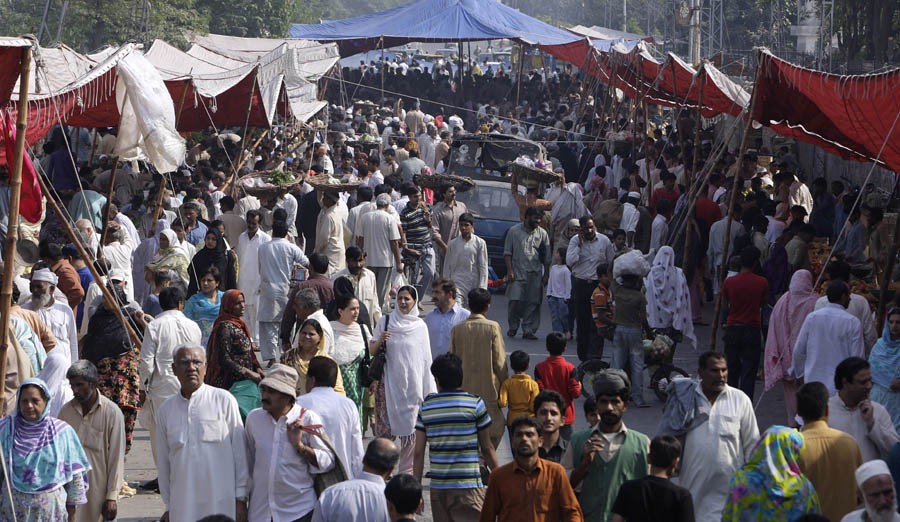
Unchecked population growth is seriously impacting Pakistan’s socio economic indicators

Last week Pakistan Institute of Labour Research (PILER) organised a peace conference about Karachi. The conference was well attended by different civil society and government representatives. Many issues like water, sanitation, poverty, joblessness and internal migration were discussed.
The main issue discussed extensively was internal migration from different provinces towards Karachi. One participant revealed the number of people migrating to Karachi on daily basis is around 8000 to 10000. What will be the consequences of such a large migration for Karachi? Geographically, Karachi has now reached Nooriabad in north, Hub, Balochistan in west and Gharo in South. It is also spreading towards coastal belt all around Karachi towards Ketibunder.
Karachi and other urban cities are sitting on a ticking population bomb, which can explode any time. How much population a city can geographically and economically accommodate?
As per population census 2017, Karachi’s city population is 14.9 million. About 80,000 people have not been counted in Karachi, though the city is bearing their burden. Suppose if my permanent address on ID card is Thatta, then I am counted over there in population census, though I am living in Karachi. Municipal services of Karachi are bearing my cost of living. Karachi is bearing my burden on water, sanitation, roads and all civic facilities. This burden has turned Karachi into a rural city (ruralisation of urbanisation!!) where 70 percent people are living in slum areas.
All political parties cried about population counting of Karachi but nothing has been done and still we are waiting for final authenticated figures. The government of Sindh demanded opening of at least 5 blocks of population census but the request was rejected by CCI. So we have to depend on declared figures.
In 1950s, Pakistan was the 13th most populated country and today, as per census 2017, Pakistan is the 6th most populous country in the world. Pakistan’s population has touched the figure of 204.79 million people. If this trend of population growth continues, Pakistan’s population will double by 2045. The total fertility rate is now above 2.4 percent, which is alarming for the policy makers and for the future of Pakistan.
Pakistan’s global commitments under Millennium Development Goals (MDGs) have suffered due to non-serious attitude of the government towards population control programme. Now sustainable development goals targets are also missing.
The world is watching us. In 2012, the international community had set goals of family planning to be achieved till 2020. Family Planning 2020 (FP2020) is a global partnership that supports the rights of women and girls to decide, freely, and for themselves, whether, when, and how many children they want to have. Pakistan is one of the signatory of FP2020 goals. According to goals, Pakistan will achieve around 55 percent of family planning till 2020. This goal is far from achievement if we look at the current reports of FP2020 secretariat. The report shows that Pakistan has achieved only 30 percent to 32 percent of contraceptive prevalence rate (CPR), which is very slow and not acceptable. It was committed by Pakistan that by 2020, it will achieve a contraceptive prevalence rate of 55 percent.
After the passage of the 18th Constitutional Amendment in 2010, population and health were devolved to the provinces and provincial departments assumed responsibility for financial planning and management in 2014. This amendment has supported the provinces to chalk out their own strategy to handle family planning issues. Unfortunately, the provinces have failed to address population planning in an effective way.
Population increase is seriously impacting Pakistan’s socio economic indicators. Poverty, malnutrition, stunting and mother and child health are becoming serious issues. HIV-AIDS, Hepatitis, Polio and other diseases have invaded Pakistan. We have not properly addressed rural poverty in the last 77 years and now urban poverty is increasing due to population growth. Issues of urban poverty will further deteriorate law and order situation in cities.
Unchecked growth in population will harm the very fabric of society. Immigration of rural masses towards urban areas in search of jobs has turned cities into human jungles. Our natural resources are shrinking, water resources are depleting and unemployment is increasing.
The government needs to formulate a policy for internal immigrants. People trying to settle in urban centers they must get permission from local or provincial governments. This policy exists in China, Japan and other countries where permission is required for resettlement in urban areas. All other civic issues will be automatically resolved if we control population.